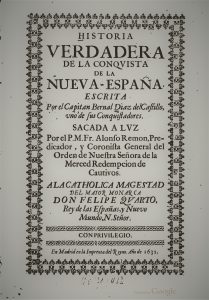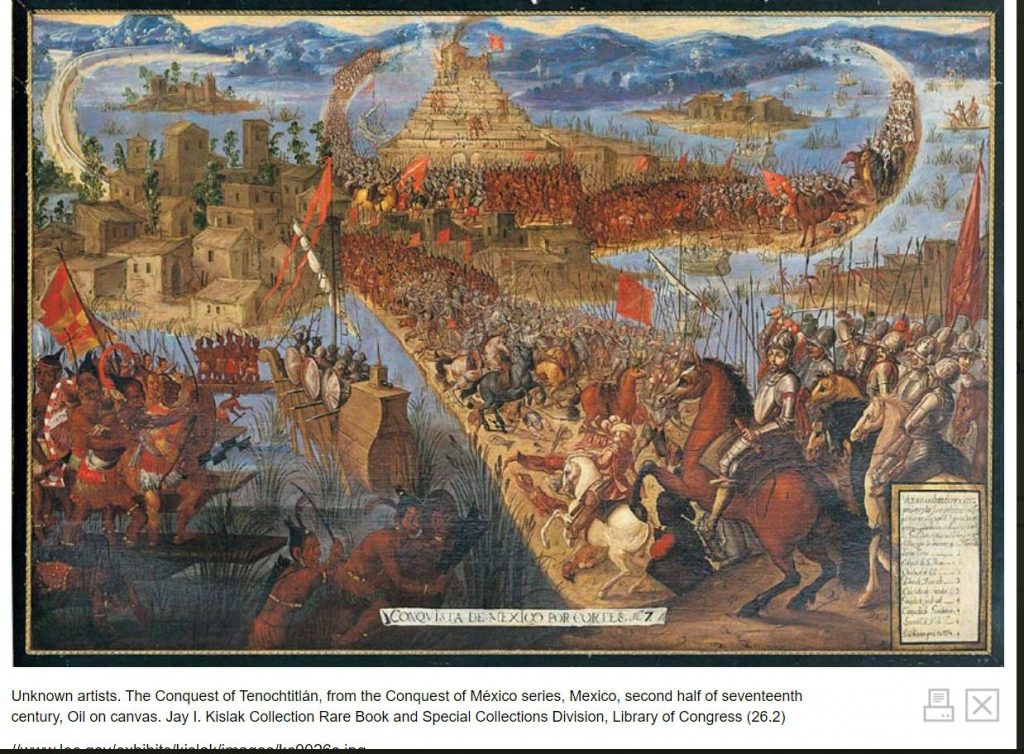Tag: primary sources
Primary Sources: Confederate Slave Payrolls
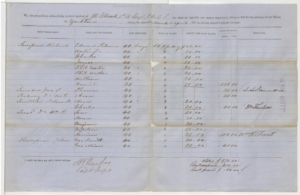 The National Archives recently released a digitized collection of Confederate Slave Payrolls, 1861-1865 that are part of Record Group 109, War Department Collection of Confederate Records. The records list the names and locations of the slaves whose labor was leased to the Confederacy for a variety of tasks, including digging entrenchments, creating obstructions on rivers, digging potassium nitrate for gunpowder, and providing labor at ordnance factories and arsenals. The payrolls provide the name and usually the place of residence of each slave owner. The information provided about the slave included his or her name, date and place employed, occupation, number of days worked, daily rate of pay, total amount of pay, and name of the Confederate Officer responsible for the payroll. The article “Civil War Confederate Slave Payroll Records” provides more information about the content and organization of the records.
The National Archives recently released a digitized collection of Confederate Slave Payrolls, 1861-1865 that are part of Record Group 109, War Department Collection of Confederate Records. The records list the names and locations of the slaves whose labor was leased to the Confederacy for a variety of tasks, including digging entrenchments, creating obstructions on rivers, digging potassium nitrate for gunpowder, and providing labor at ordnance factories and arsenals. The payrolls provide the name and usually the place of residence of each slave owner. The information provided about the slave included his or her name, date and place employed, occupation, number of days worked, daily rate of pay, total amount of pay, and name of the Confederate Officer responsible for the payroll. The article “Civil War Confederate Slave Payroll Records” provides more information about the content and organization of the records.
Primary Sources: Cumhuriyet Digital Archive
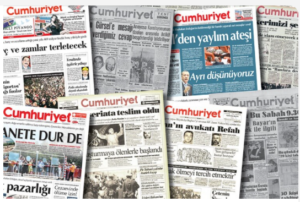 The Library recently acquired the Cumhuriyet Digital Archive, which provides access to the complete run of the newspaper since its establishment in 1924. This information is provided on the digital platform: “…Cumhuriyet (“The Republic”) is the oldest secular Turkish daily newspaper and is widely considered one of the last remaining opposition newspapers in Turkey. Founded by journalist Yunus Nadi Abalıoğlu at the initiative of Mustafa Kemal Atatürk, Cumhuriyet was the first newspaper of the Turkish Republic and promoted a belief in democracy, secularism and the rule of law. According to the newspaper’s editorial principles: Cumhuriyet is an independent newspaper; it is the defender of nothing but the Republic, of democracy in the scientific and broad sense. It will fight every force that tries to overthrow the Republic and the notion and principles of democracy. It will endeavor for the embracing by society of the principle of secularism along the path of “Enlightenment” ushered in by Atatürk’s revolution and principles.”
The Library recently acquired the Cumhuriyet Digital Archive, which provides access to the complete run of the newspaper since its establishment in 1924. This information is provided on the digital platform: “…Cumhuriyet (“The Republic”) is the oldest secular Turkish daily newspaper and is widely considered one of the last remaining opposition newspapers in Turkey. Founded by journalist Yunus Nadi Abalıoğlu at the initiative of Mustafa Kemal Atatürk, Cumhuriyet was the first newspaper of the Turkish Republic and promoted a belief in democracy, secularism and the rule of law. According to the newspaper’s editorial principles: Cumhuriyet is an independent newspaper; it is the defender of nothing but the Republic, of democracy in the scientific and broad sense. It will fight every force that tries to overthrow the Republic and the notion and principles of democracy. It will endeavor for the embracing by society of the principle of secularism along the path of “Enlightenment” ushered in by Atatürk’s revolution and principles.”
Primary Sources: Cuban Periodicals: Cultural Magazines Published by Casa de las Américas, 1960–2009

Primary Sources: HistoryMakers Digital Archive
 The HistoryMakers Digital Archive is an ongoing oral history project begun in 1993 to record, preserve, and disseminate the stories of African Americans and African-American led groups and movements. The interviewees come from a variety of fields and from across the United States. The high-quality video interviews are broken up into sections with brief summaries of the content, and each section is accompanied by a transcript. The resource can be searched by aspects of historical context, biographical themes, or qualities of the interview.
The HistoryMakers Digital Archive is an ongoing oral history project begun in 1993 to record, preserve, and disseminate the stories of African Americans and African-American led groups and movements. The interviewees come from a variety of fields and from across the United States. The high-quality video interviews are broken up into sections with brief summaries of the content, and each section is accompanied by a transcript. The resource can be searched by aspects of historical context, biographical themes, or qualities of the interview.
Primary Sources: New acquisitions from Adam Matthew Digital
This summer the Library invested in a number of archival collections from Adam Matthew Digital. The descriptions here were provided by the company.
Colonial Caribbean: CO Files from The National Archives, UK
This enormous range of unique primary sources covers British governance of 25 islands in the Caribbean from 1624-1872, meeting teaching and research needs across a wide variety of themes, from settlement and colonial rivalries in the region, to the economics of the plantation systems and the impact of slavery, to crime and punishment and the everyday lives of the people that called the islands home. The first module stretches from the turbulent years of early British settlement to the rise of the abolition movement, amongst the fierce rivalries with the Spanish, Danish and French powers in the Caribbean region. Settlement, Slavery, and Empire, 1624-1832 documents the rise of absentee landlords, and traces the rise and decline of the slave trade, from the regular transportation of enslaved peoples through trade and shipping, to the rise of the abolition movement.
Sex and Sexuality
Sex & Sexuality covers a broad range of topics and is drawn from leading archives around the world. From papers of leading sexologists, to LGBTQI+ personal histories, the collection is an essential resource for the study of human sexuality, its complexities and its history. Sourced solely from the renowned Kinsey Institute Library & Special Collections, Module I makes available essential primary sources from the tenures of the first three Institute directors: Dr. Alfred C. Kinsey, Dr. Paul Gebhard and Dr. June Reinisch. While Module II, sourced from archives in the US, UK and Australia, including a number of collections from the ONE National Gay and Lesbian Archives at University of Southern California Libraries, explores LGBTIQ+ personal histories, self-expression and community activism.
Ethnomusicology
Presenting content from across the globe, this diverse and comprehensive resource features thousands of audio field recordings and interviews, educational recordings, film footage, field notebooks, slides, correspondence and ephemera from over 60 fields of study, including sites in West Africa, North America, South East Asia and more. Produced in collaboration with the UCLA Ethnomusicology Archive – a world centre for the study of Ethnomusicology – the content within this collection gives access to the cultural and social lives of the source communities represented within the recordings; allowing users a unique insight into the musical traditions of these communities. This collection therefore allows for the study of cultural identity, social norms, religion and ritual, gender roles, as well as many other themes.
African American Communities
A diverse range of primary source material is showcased in this collection that focuses on race relations across social, political, cultural and religious arenas, focusing predominantly on Atlanta, Chicago, Brooklyn, and towns and cities in North Carolina this collection presents multiple aspects of the African American community. Through pamphlets, periodicals, correspondence, official records and in-depth oral histories, it reveals the challenges of racism, discrimination and integration, and the expressions of a unique African American culture and identity.
American Indian Newspapers
Representing a huge variety in style, production and audience, the newspapers in this database include national periodicals as well as local community news and student publications. This digital collection provides exciting research opportunities into a range of subjects from an Indigenous perspective, including the civil rights era and American Indian Movement (AIM), education, environmentalism, land rights and cultural representation. This resource has been developed with, and has only been made possible by, the permission and contribution of the newspaper publishers and Tribal Councils concerned. Adam Matthew is extremely grateful for their continuing support of this project.
Gender: Identity and Social Change
From traditional constructions of femininity and masculinity, to the struggle for women’s rights and the emergence of the men’s movement, Gender: Identity and Social Change offers three centuries of primary source material for the exploration of gender history. Explore records from men’s and women’s organisations, advice literature and etiquette books to reveal developing gender roles and relations. Gain an insight into changing societal expectations about gender roles through personal diaries and correspondence and explore the life and careers of key figures and pioneers in gender history.
Foreign Office Files for Japan (Expansion of previously purchased content.)
Sourced from the rich FO 371 and FO 262 series at The National Archives, UK, this resource unites formerly restricted Japan-specific documents and is enhanced by the addition of a selection of FO 371 Far Eastern General sub-series, and Western and American Department papers. Topics covered include ultra-nationalism and the Japanese agenda of imperial dominance in the Far East, employment and social conditions in a time of global economic instability, and the ‘Great Kanto Earthquake’ of 1923 which flattened Tokyo. These documents record relations with Axis Powers in the context of changing alliances, the deterioration of relations with the Allies as World War Two reached the Pacific, and American post-war occupation of Japan.
Foreign Office Files for South East Asia
With material drawn from the National Archives, UK, this product provides a Western view of events in the region through official government documents and records covering the wider region and the rising animosity towards the perceived threat of communism at the time. There is a particular emphasis on the turbulent creation of Malaysia, alongside the release of the Cobbold Commission report, the end of the Malayan Emergency, and the Indonesia-Malaysia confrontation.
Migration to New Worlds
Set against a backdrop of colonial expansion, industrial progress and global conflict, Migration to New Worlds tells the stories of individuals and families who risked everything to build new lives in North America and Australasia between 1800 and 1980. Unique primary source diaries, correspondence, photographs, oral histories and journals narrate the vivid realities of ocean travel and life in adopted homelands. Organisational correspondence, government proceedings, shipping company papers and records of advocacy groups provide key context to migrants’ everyday struggles.
Race Relations in America
The Race Relations Department, based at Fisk University, was a highly influential think tank offering a forum for discussion and research on racial topics. The work of the Department highlighted topics such as poverty and inequality, class, housing, employment, education and government policy. Its programme attracted many well-known figures in the Civil Rights Movement, including Thurgood Marshall, Martin Luther King Jr., Bayard Rustin, Charles Houston, and Marguerite Cartwright. This resource sheds light on the fascinating work of the Department through the digitisation of extensive records from the Department’s archives, now held at the Amistad Research Center in New Orleans.
Mexico and the conquest of Tenochtitlán (May 1521-2021)
The month of May this year marks the five-hundredth anniversary of the fall of Tenochtitlán (1521-2021). The tragedies that unfolded in the continent after the conquest are well documented. However, as far as the accounts of the fall of the Tenochtitlán are concerned, there are several different opinions and disagreements. What about the letters of Hernán Cortés? Here is the second letter from the WDL
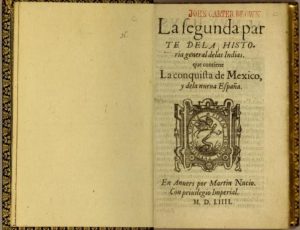 Also on the archive.org, we see a digitized copy of JCB’s 1552 Francisco López de Gómara’s “La historia general de las Indias, y todo lo acaescido enellas dende que se ganaron hasta agora. ; y La conquista de Mexico, y dela Nueua España.”
Also on the archive.org, we see a digitized copy of JCB’s 1552 Francisco López de Gómara’s “La historia general de las Indias, y todo lo acaescido enellas dende que se ganaron hasta agora. ; y La conquista de Mexico, y dela Nueua España.”
What are some of the primary sources that are now open access and can be used to inform us about the events that unfolded five hundred years ago? One such source is Bernal Díaz del Castillo’s is work, “Historia verdadera de la conquista de la Nueva España.” On the right, one sees a title page of the 1632 imprint of the same that is available in Google Books.
While some often use paintings from the late 17th century to depict and describe the fall of the capital of the Aztecs, these are often functions of the artistic license, and in some cases, we do not know who could have painted them.
The painting, such as the one below, is one example from the Library of Congress’ collection. Can images narrate the nuanced past accurately? These images are from the LOC’s exhibition and also in Wikimedia commons.
But where are the voices of those who were conquered but not vanquished? Can we rely on Codex Florentino as one perhaps contested source? The WDL (from the collection of Biblioteca Medicea-Laurenziana) has made it available for the readers to judge the process that began with the conquest of Tenochtitlán. The LOC’s description reads, “Historia General de las Cosas de Nueva España” (General History of the Things of New Spain), as the Florentine Codex is formally known, is an encyclopedic work about the people and culture of central Mexico compiled over a period of 30 years by Fray Bernardino de Sahagún (1499–1590), a Franciscan missionary who arrived in Mexico in 1529, eight years after completion of the Spanish conquest by Hernan Cortés. The text is in Spanish and Nahuatl, the language of the Aztecs. Its 12 books, richly illustrated by indigenous artists, cover the Aztec religion and calendar, economic and social life, Aztec history and mythology, the use of plants and animals and the Spanish conquest as seen through the eyes of the native Mexicans.”
I leave you with unfinished thoughts. Can a manuscript tell the story? See for yourself by watching Getty Researcher Institute’s five-part series. And with Taibo’s, “¿Historia para qué?”I love Paco Ignacio Taibo II’s argument about who we are? And his questioning of sanitization history where Cortes and Cuauhtemōc are dancing La Sandunga.
Primary Sources: Black Thought and Culture
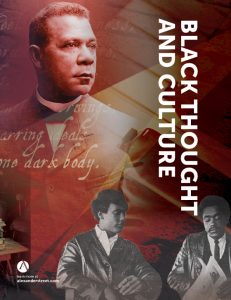 The Library recently acquired Black Thought and Culture, an electronic collection of approximately 100,000 pages of non-fiction writings by major American black leaders, covering 250 years of history. It also includes a great deal of previously inaccessible material, including letters, speeches, political leaflets, interviews, periodicals, and trial transcripts. Highlights include:
The Library recently acquired Black Thought and Culture, an electronic collection of approximately 100,000 pages of non-fiction writings by major American black leaders, covering 250 years of history. It also includes a great deal of previously inaccessible material, including letters, speeches, political leaflets, interviews, periodicals, and trial transcripts. Highlights include:
- The transcript of the Muhammad Ali trial
- A full run of The Black Panther newspaper, with full-color images of every page as well as searchable text
- 2,500 pages of exclusive Black Panther oral histories owned by the Dr. Huey P. Newton Foundation
Trial: Slavery and Anti-Slavery, parts 2-4
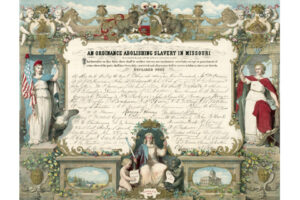
Until April 2, 2021, the Library has trial access to parts 2-4 of Slavery and Anti-Slavery. All modules can be accessed from the A-Z database link.
Part I: Debates over Slavery and Abolition sheds light on the abolitionist movement, the conflicts within it, the anti- and pro-slavery arguments of the period, and the debates on the subject of colonization. It explores all facets of the controversial topic, with a focus on economic, gender, legal, religious, and government issues.
Part II: Slave Trade in the Atlantic World charts the inception of slavery in Africa and its rise as perpetuated on both sides of the Atlantic Ocean, placing particular emphasis on the Caribbean, Latin America, and United States. More international in scope than Part I, this collection was developed by an international editorial board with scholars specializing in North American, European, African, and Latin American/Caribbean aspects of the slave trade.
Part III: The Institution of Slavery expands the depth of coverage of the topic. Part III explores, in vivid detail, the inner workings of slavery from 1492 to 1888. Through legal documents, plantation records, first-person accounts, newspapers, government records, and other primary sources, this collection reveals how enslaved people struggled against the institution. These rare works explore slavery as a legal and labor system, the relationship between slavery and religion, freed slaves, the Shong Masacre, the Dememara insurrection, and many other aspects and events.
Part IV: Age of Emancipation includes numerous rare documents related to emancipation in the United States, as well as Latin America and the Caribbean. This collection supports the study of many areas, including activities of the federal government in dealing with former slaves and the Freedmen’s Bureau, views of political parties and postwar problems with the South, documents of the British and French government on the slave trade, reports from the West Indies and Africa, and other topics.
Trial: African American Newspapers, Series 2

Until March 15, the Library has trial access to Readex’s African American Newspapers, Series 2, which includes 75 newly available newspapers and complements Series 1, which the Library acquired last year.
“While African American Newspapers, Series 1, was created from the extensive newspaper archives of the Wisconsin Historical Society, Kansas State Historical Society, and the Library of Congress, Series 2 was created from the remarkable holdings of the American Antiquarian Society, Center for Research Libraries, the Library of Congress, and New York Public Library. Selections were guided by James Danky, editor of the monumental African-American Newspapers and Periodicals: A National Bibliography.”
Trial: UK Press Online
 Through the end of February, the Library has trial access to UKPress Online, a collection of historic and current newspapers. The following information was provided by the vendor.
Through the end of February, the Library has trial access to UKPress Online, a collection of historic and current newspapers. The following information was provided by the vendor.
The Daily Express (Updated daily) was launched in 1900 by Arthur Pearson as a mid-market broadsheet. The ha’penny Express was the first to devote its front page to news (rather than advertisements): “This paper is produced with the intention of supplying its readers with news. That is the excuse for its existence.” Advance orders for Issue One were a million and a half copies– “absolute impossibility to supply… we are doing our best.”
The first issue was over-subscribed. That edition began a series of articles from an Expressman in “Hayti”; another was despatched to Patagonia to search for a “giant ground sloth” – in vain, although his articles gripped readers for weeks. This policy of having “our man on the spot” became a hallmark of the Express.
When Pearson went blind, during the Great War, he sold the Express to Conservative MP Max Aitken, soon to be Lord Beaverbrook, the first “Fleet Street baron” and an evangelist of the free press – “a flaming sword which will cut through any political armour”; the paper’s symbol became The Crusader. Beaverbrook crusaded, both politically and editorially: despite personal advice to Edward VIII to give up Wallis Simpson, the Express notably chronicled every detail of their affair. And not always successfully: the Express’s vehemence against Attlee was credited with losing the 1945 election for Churchill!
By 1936, the Express had the world’s largest circulation of more than two million, rising to four million in the 1940s, under the seminal editorship of Arthur Christansen. It was one of the first newspapers to carry gossip, sport and women’s articles; it was the first to carry a crossword. With its commercial success and vast editorial staff around the world, the Express dominated Fleet Street; as a bemused Royal wrote, “I was met by a gaggle of reporters from the Daily Express and a gentleman from the Glasgow Herald”.
Express contributors run from the exiled Leon Trotsky to Evelyn Waugh (who lampooned Beaverbrook as Lord Copper – “up to a point”), William Hickey (Tom Driberg) and the cartoonist Giles.
The Express became a (black-top) tabloid in 1978. The Daily Star was a late-comer, as was the Star on Sunday, occupying the red-top tabloid slot in competition to the Sun and Mirror.
The Daily Star (Updated daily) was launched in 1978 (and is available from 2000) by Express Newspapers as a tabloid for the north of England, competing against The Sun’s Page 3 girls with its own topless Star Birds. In 1987, it lost a £500,000 libel action after accusing Tory deputy chairman Jeffrey Archer of paying hush money to a prostitute – a political scandal in those pre-Trump days…. Twelve years later, the now-Lord Archer admitted he had lied and, in 2002, he had to repay the cash with costs and interest – £1.5million. The same year, the Star launched a Sunday sister (all available – updated weekly).
Church Times (updated weekly): The World’s leading Anglican newspaper. The first 26 years, from the paper’s very first issue in 1863 to 1889, saw fierce ‘battles’ over Ritualism: one of the reasons why the Church Times was established was to defend the High Church against “Broad and Low Bigots”. The paper also warned against the digging of a Channel Tunnel, criticised President Lincoln for going to the theatre (where he was assassinated), and had a stern word for one of its advertisers: “It would be curious to learn how such a cad came to be a priest.” All of the archive is now available: cataloguing almost every page from 1863 to the present.
Daily Worker & Morning Star (updated daily): The Communist & Socialist Press providing a different angle on news – through WW2 and the new millennium.
Action, Fascist Week and Blackshirt the Fascist titles published by Oswald Mosley before and during WW2 (until banned by Churchill’s government). A view from the far Right as the World prepared for war.
The Watchman (1835-1884): primarily a Wesleyan, (and the first) Methodist newspaper, The Watchman has an impressive breadth and depth of reporting of matters of import in 19th Century Great Britain and abroad. Details of movements of clergy are useful for those trying to track their family history; parliamentary election results are published in detail; discussions of the Second Anglo-Afghan war (1878-80) may give some perspective to modern campaigns.
World War One & World War Two A key package of newspaper titles giving a broad political and geographical range of views from national and regional publishers’ newspapers: Includes the issues of all of the above titles between 1914-1918 and 1933-1945. Providing the view from ‘the North’ the WW2 editions of the Yorkshire Post cover from January 1933 to April 1946.
The South Eastern Gazette (1852-1912), formerly the Maidstone Gazette, was a major regional title for the south-east of England. Available free in the UK thanks to the ‘Your Heritage Lottery Fund’ and the Kent Messenger, the title covers Kent and much of the South-East of England from East Hampshire through Surrey and Sussex to South Essex and parts of London.”
